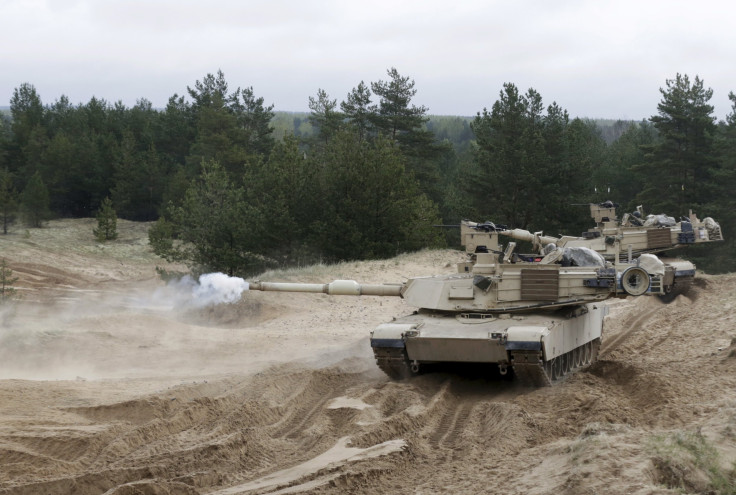Amid Russian Military Aggression, Pentagon To Station Tanks, Armored Vehicles In Eastern European Nations

The Pentagon will station approximately 250 pieces of heavy weaponry, including tanks, howitzers and armored vehicles, in six Eastern European nations near Russia, Secretary of Defense Ash Carter said Tuesday. The move was intended to provide support of U.S. allies and NATO member nations amid a marked increase in Russian military aggression in the region.
Much of the military equipment was already in Europe and will be redeployed, Defense News reports. The repurposed hardware will include about 140 Bradley armored vehicles, about 90 Abrams tanks and about 20 howitzers, reports said. The Pentagon will distribute the weaponry among Poland, Romania, Estonia, Lithuania, Bulgaria and Latvia as part of a plan called the European Activity Set.
“This pre-positioned European activity set includes tanks, infantry fighting vehicles, artillery” that will be used in military exercises and training, Carter said in a press conference with defense ministers from Latvia, Estonia and Lithuania, according to Agence France-Presse. “While we do not seek a cold, let alone a hot, war with Russia, we will defend our allies.”
Several NATO-allied Eastern European nations, including Latvia, Estonia and Lithuania, have expressed concern in recent months amid the Russian military’s series of snap-readiness drills. NATO has repeatedly rebuked Russia for its purportedly direct involvement in the eastern Ukraine conflict, in which more than 6,400 people have died since early 2014.
Russia has repeatedly denied its soldiers are active in eastern Ukraine. An unnamed Russian Defense Ministry official condemned on Tuesday the Pentagon’s decision to store additional heavy weaponry in Eastern Europe and said the decision was the United States’ most provocative act since the end of the Cold War, Reuters reports.
NATO created a rapid-response force earlier this year to serve as a check against future Russian aggression. A group of the alliance’s defense ministers plan to expand the force from 30,000 to 40,000 troops this week at a NATO summit in Brussels, AFP reported.
© Copyright IBTimes 2024. All rights reserved.






















